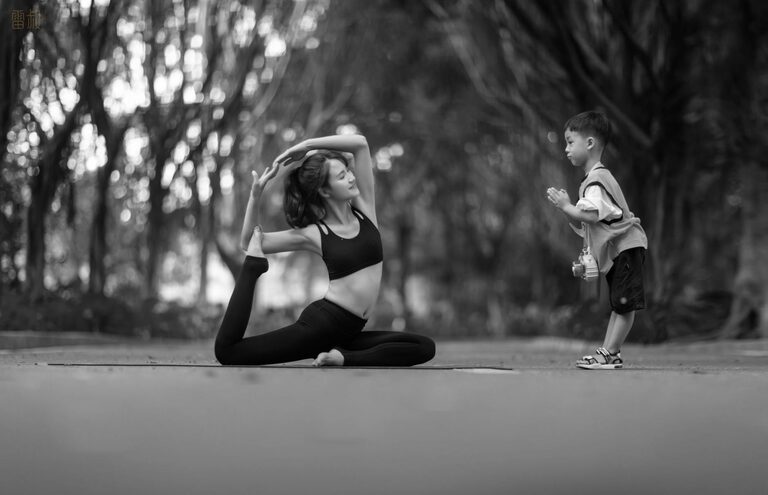In today’s fast-paced world, it’s easy to get caught up in the bustle and lose touch with the present moment. Mindfulness is a simple yet powerful tool that can help you slow down, reduce stress, and improve your overall well-being. The great news is that mindfulness doesn’t require hours of practice or special equipment. With just a few small steps incorporated into your daily routine, you can bring more calm and clarity into your life.
In this post, we’ll explore simple mindfulness practices you can easily adopt to create a greater sense of peace and balance every day.
What Is Mindfulness?
Mindfulness means paying attention to the here and now — noticing your thoughts, feelings, and surroundings without judgment. It helps you become more aware of your present experience rather than getting lost in worries about the past or future.
This kind of awareness encourages acceptance, reduces impulsiveness, and helps you respond to situations with more calm and clarity.
Why Practice Mindfulness Daily?
Making mindfulness a regular habit provides several benefits:
– Reduces stress and anxiety by calming your nervous system.
– Improves focus and concentration in work or study.
– Enhances emotional regulation by helping you observe your feelings.
– Encourages healthy habits like better sleep and eating.
– Increases self-compassion and understanding.
The best part is, mindfulness can fit naturally into everyday tasks and doesn’t require extra time out of your schedule.
Simple Mindfulness Practices to Try
Here are easy ways to introduce mindfulness into your daily life:
1. Mindful Breathing
A basic mindfulness practice involves focusing on your breath.
– Find a comfortable sitting position.
– Close your eyes or soften your gaze.
– Breathe naturally and notice the air moving in and out.
– If your mind wanders, gently bring attention back to your breath.
Try this for 1–3 minutes several times a day, especially when feeling stressed.
2. Body Scan
This technique helps you connect with physical sensations and release tension.
– Sit or lie down comfortably.
– Starting from your feet, slowly bring attention to each part of your body.
– Notice any sensations, tightness, or warmth.
– Breathe into these areas and try to relax them.
A body scan can take 5–10 minutes and is especially helpful before sleep.
3. Mindful Eating
Instead of rushing through meals, try eating mindfully.
– Eat slowly and without distractions like phones or TV.
– Notice the textures, colors, and flavors of your food.
– Chew thoroughly and savor each bite.
– Observe how your body feels as you eat.
This practice can improve digestion and foster a healthier relationship with food.
4. Single-Tasking
Mindfulness can help counter the habit of multitasking.
– Choose one task to focus on at a time.
– Give it your full attention without switching between activities.
– Notice what you’re doing and how you feel while doing it.
– If distractions arise, gently bring yourself back to the task.
This approach boosts productivity and reduces overwhelm.
5. Mindful Walking
Walking can become a moving meditation.
– Walk slowly and feel the ground beneath your feet.
– Notice the movement of your legs, the rhythm of your steps.
– Observe your surroundings—the colors, sounds, smells.
– Keep your attention on the experience of walking without letting your mind drift.
Even a few minutes can refresh your mind and body.
6. Gratitude Pause
Taking a moment to appreciate what’s good in your life nurtures positivity.
– Pause at any time during the day.
– Reflect on three things you’re grateful for.
– You can say them silently or write them down.
– Feel the gratitude fully.
This simple habit can shift your mindset and improve your mood.
Tips to Maintain Your Mindfulness Practice
– Start small: Even a minute or two daily can make a difference.
– Be gentle with yourself: It’s normal for your mind to wander; just return to the moment.
– Use reminders: Set alarms or sticky notes to prompt mindfulness breaks.
– Involve others: Practice with friends or family to stay motivated.
– Create a routine: Pair mindfulness with daily habits like brushing your teeth.
Conclusion
Mindfulness is a practical and accessible way to bring more awareness and calm into your daily life. With these simple practices, you can train your mind to be present, improve your focus, and manage stress more effectively. Remember, mindfulness is a skill built with consistency and kindness toward yourself. Start small, stay curious, and enjoy the journey to greater well-being.
Feel free to share your favorite mindfulness tips or ask questions in the comments below!

